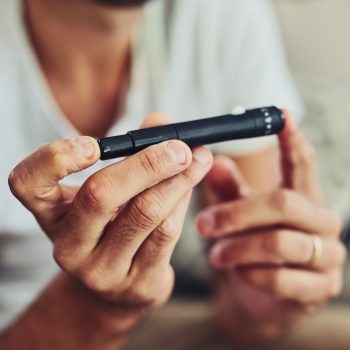It is located at the front of the neck and has the important function of producing an important type of hormones, thyroid hormones, which control important biological processes such as, the regulation of numerous metabolic functions. We talked about thyroid and everything that is important to know about diseases that may affect you with Professor Furio Pacini, a specialist in Endocrinology and Diabetology at Humanitas.
How the thyroid gets sick
Among the most common thyroid disorders are nodules, goiter and dysfunctions of hyper and hypothyroidism. Goiter and thyroid nodules are very common in the general population, especially in the female population after the age of 40-50. Since they are very often due to iodine deficiency – a very important element that affects the production of hormones and the proper functioning of the thyroid gland – diseases and disorders related to this organ could be prevented starting from the diet, increasing the intake of iodine in the diet, for example through the use of salt with added iodine (iodine salt). But let’s take a closer look at what this is all about. The nodules are real swellings, that is solid formations (in some cases full of liquid) that are formed inside the gland. According to the National Institute of Health they are the most common thyroid disease, but they are almost always benign. Only 3-5% of the cases have malignant characteristics (thyroid tumors). The goiter is simply an increase in the volume of the thyroid, which can vary in size: in most cases it is a small increase, which does not cause symptoms or discomfort but, in some cases if it can be more challenging leading to disorders, for example, of breathing and swallowing. When the thyroid produces too many thyroid hormones we talk about hyperthyroidism, which has as its most frequent symptoms weight loss, nervousness, anxiety and mood changes. If the thyroid does not produce enough thyroid hormones, hypothyroidism occurs, which could cause, among other things, problems with metabolism and overweight, and other thyroid diseases include malignant tumors due to the malignant transformation of one or more thyroid cells, resulting in uncontrolled growth: these tumors tend to be very slow and not very aggressive.
Diagnosis
The use of the new technologies (mainly ultrasound) for the diagnosis of these disorders has led, in the last 10 years, to the discovery of an increasing number of thyroid nodules: it is estimated that the incidence of “clinical” nodules, that is, large enough to be discovered by the patient or the doctor by simple neck inspection, is 5-10% of the population. The diagnosis goes through several steps and analyses agreed with the doctor. The first step is to ultrasound and dose the thyroid hormones. If there is a disorder of thyroid function (hypothyroidism or hyperthyroidism) we proceed with the appropriate treatment, which is usually medical in nature. On the other hand, if we are faced with a thyroid nodule, we continue with the execution of a needle aspiration that serves to obtain groups of cells that, analyzed under a microscope, give us indications on the benignity or malignancy of the nodule itself. Once the final diagnosis has been obtained, the doctor will provide the most appropriate therapy. Thanks to ultrasound scans, it is possible to diagnose and monitor even small thyroid nodules, which on palpation would not be detected. The consequence is that in ultrasound cases the incidence of thyroid nodules after 50 years of age even reaches 30-40% of the population, thus representing a phenomenon of medical and social importance. Of these, only 3-5% of all thyroid nodules are malignant, regardless of their size.
Therapies
Obviously the therapy of thyroid nodules varies according to the benign or malignant nature: non-functioning benign nodules “generally do not need any therapy, unless they are very large, that is, more than 3-4 cm, such as to cause ‘collateral’ symptoms such as neck compression, such as dysphagia, compression and tracheal deviation or dysphonia. In these cases, it may be necessary to have surgery which, in the case of a single nodule, will be lobectomy, reserving total thyroidectomy only for multinodular goiters”, explained the endocrinologist at Humanitas. In the case of malignant nodules, however, surgical therapy is mandatory and consists of partial or total removal of the thyroid. After surgery, the vast majority of malignant thyroid tumors (more than 90%) heal perfectly and definitively.
Customization of therapies
As it happens now in the therapies of most of the pathologies of our body, also with regard to thyroid diseases the key word is “customize”: “Over the years the treatment of malignant neoplasms is increasingly directed to a therapy tailored to the clinical characteristics of the patient – said Professor Pacini -. No longer a therapy equal for all, but a therapy based on the real individual risk. This allows the execution of less invasive therapies for cases with a good prognosis, reserving the most complete therapies only for aggressive forms”.








